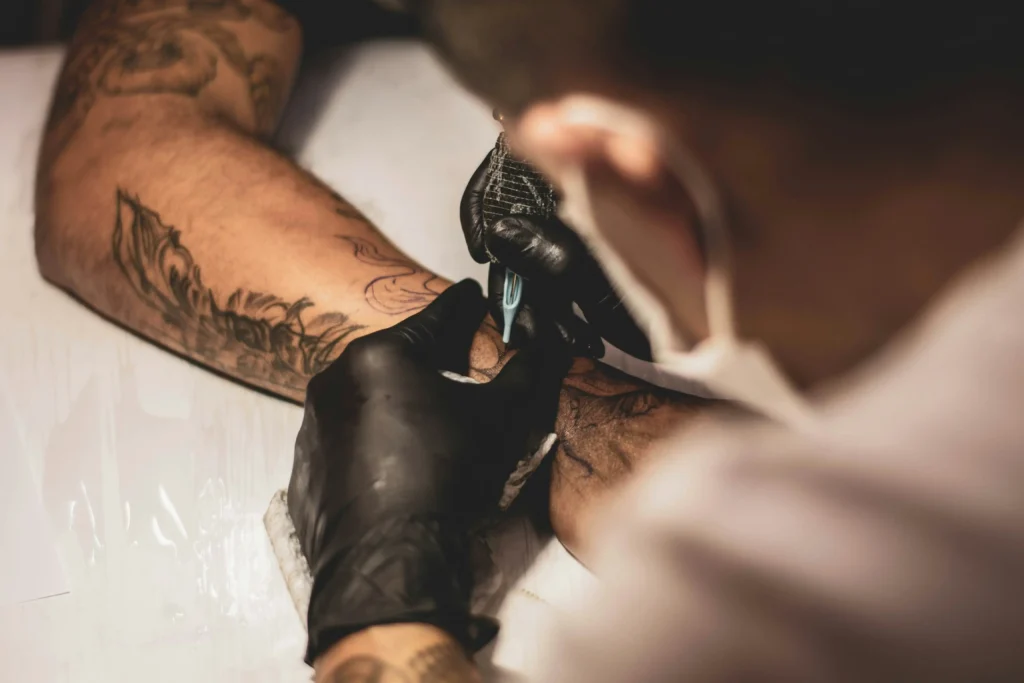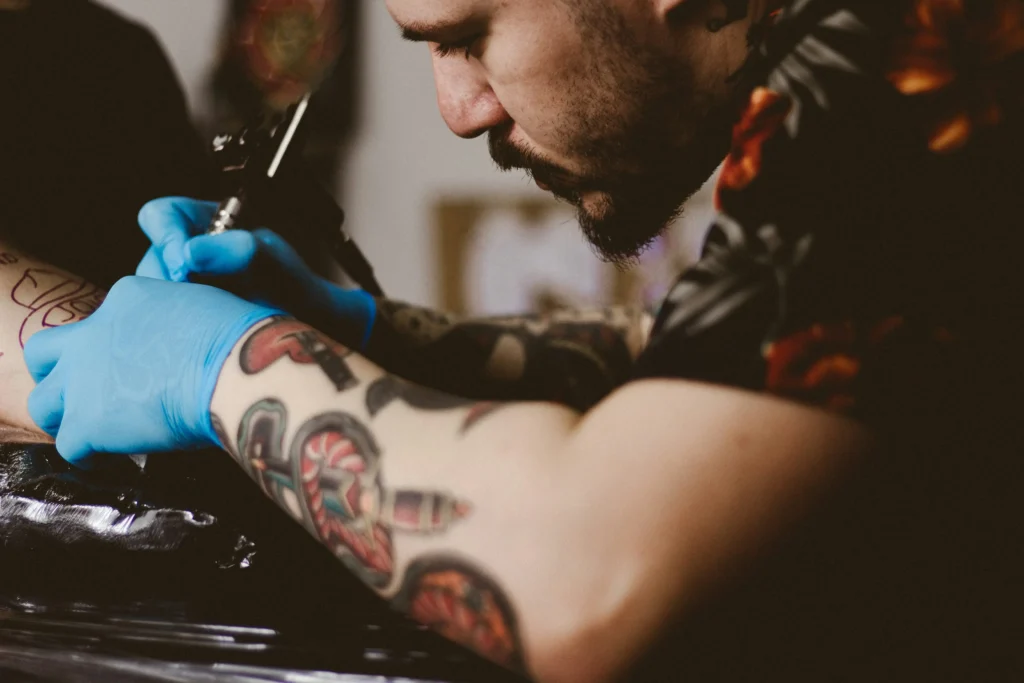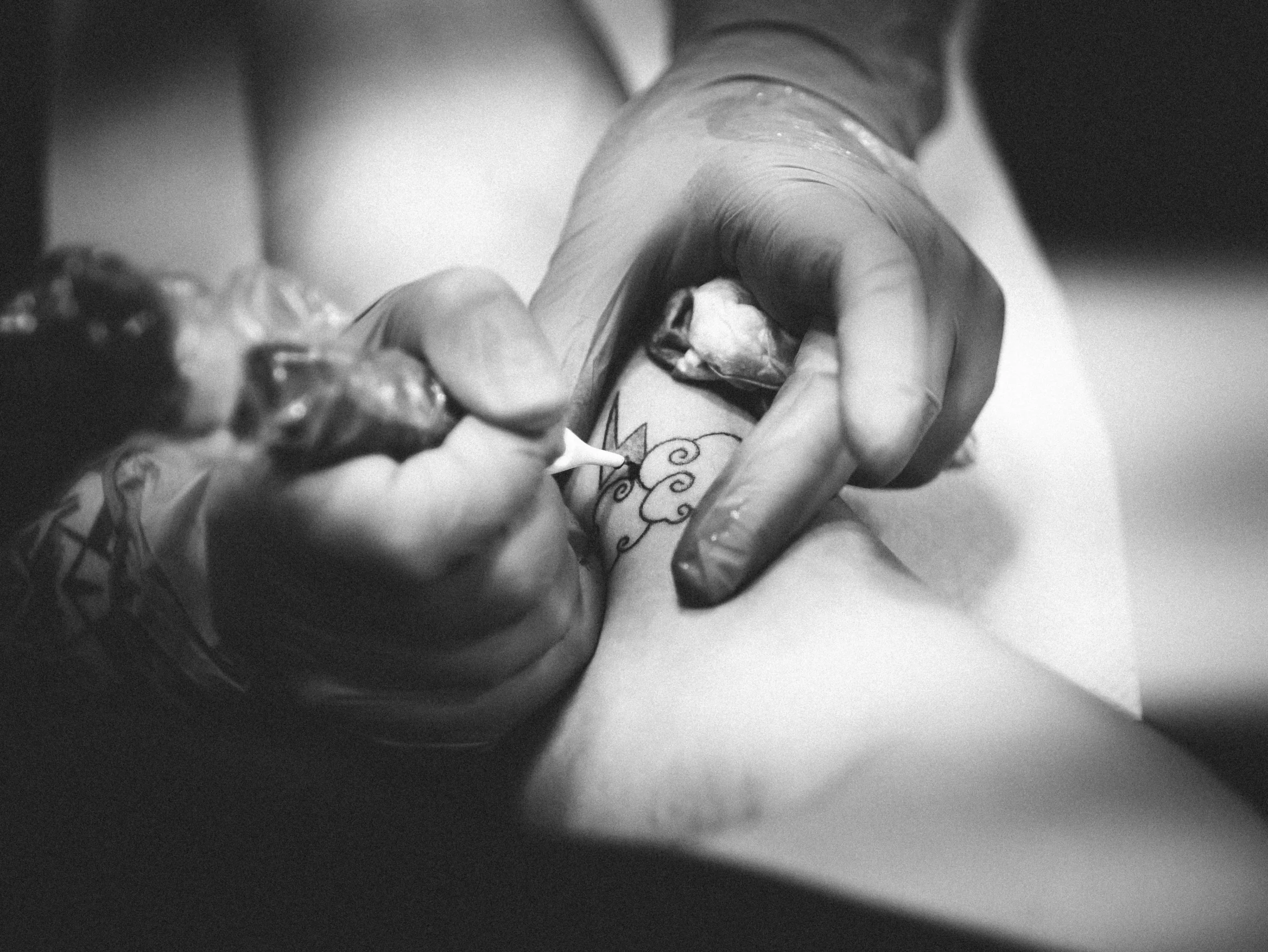Ink on the skin is not all that tattoos are; they are works of art that hold meaning and importance for the person who receives them. When you open the packaging of your new ink, you find more than blood. Once you see a tattoo weeping, it may be frightening to those who have never seen one. However, getting a tattoo isn’t just about choosing a design and enduring the needle.
It’s also about understanding the complex process of healing that follows. However, a common occurrence during the new tattoo healing process is tattoo weeping. In this article, let’s find out what it means, why it happened, how to stop it, and how to heal your tattoo faster.
Why Does Tattoo Weeping Happen?
During the starting tattoo healing stage, tattoo weeping refers to the release of plasma, ink and lymph fluid from the tattooed area skin. Don’t worry, it is the natural part of healing. During the tattooing process, the body responds naturally to trauma caused by the process. After the tattoo needle punctures the skin, inflammation, small wounds and fluid are produced as a result of the healing process. It happens during the start of healing when the plasma is released from the tattooed area, which will be known as weeping.
Understanding The Stages Of The Tattoo Healing Process
It is a natural reaction when plasma is released from the body after getting a tattoo. Before you understand the importance of tattoo weeping. It is necessary to understand the stages of tattoo healing. The tattoo healing process is normally based on four stages: scabbing, peeling, inflammation, and maturation.

Every stage plays an important role in the regeneration of the skin and the protection of the tattoo’s integrity. You need a complete tattoo aftercare guide, including fully cleaning and moisturizing the tattooed area of the skin, as it is necessary to facilitate healing and reduce complications. Let’s explore this in detail.
Beginning Sensitivity
Instantly when you get a new tattoo, the skin will be sensitive, and you will experience different types of reactions. Because your body responds during the tattooing process. In response, you will experience redness, swelling, and mild pain in the tattooed skin area. You don’t need to worry about it because it is a normal reaction and part of the natural healing response of your body that will happen to trauma by the tattoo needles.
Fluid & Weeping Discharge
Don’t worry, it is common for tattooed skin to weep, have blood-tinged fluids, or yellow peeps, at the start of the few days following the tattooing procedure. Having this fluid present facilitates the removal of foreign particles or ink residue from tattoo sites, facilitating healing. But depending on the size of the tattoo, plasma may be present in small amounts or large quantities. It is normal to see plasma for a few hours or days after getting a tattoo.
Scabbing
When the healing process continues successfully, the weeping will stop in the tattooed area of the skin and scabs may start. In addition to forming a protective barrier over wounded skin, these scabs contain blood plasma, lymph fluids, and tissue exudates. It is very important for you not to scratch or pick the scab if you want to heal the tattoo faster. If you do, then it will cause pigment loss or scarring.
Once the scabs are fixed, then almost all your tattoo skin will be completely healed on the surface. Once the skin layers have returned to normal, it will take weeks or months.
What Causes Tattoo Weeping? A Comprehensive Details
I mentioned above, some tattoos weeping is natural and common during the start of the healing process. But if it is extended or too much weeping, it may point to other important factors. One main reason is the use of excessive moisturizers or ointments on tattooed skin. Too much use of these products will result in the accumulation of moisture and reduction of proper airflow, which will prolong the weeping process.

The skin type of some individuals or the aftercare products they use may also contribute to weeping. So be careful before using these types of products. You must discuss with your tattoo artist. In any case, if you feel like you’ve been weeping for too long or too much fluid is released from your tattoo. You will need to recheck your aftercare guide and talk with your artist or dermatologist. if needed.
Does Tattoo Weeping Need to Be Worried About?
Weeping from a tattoo can sometimes be an indication that there are underlying health issues that need to be addressed. Now you can understand, that weeping following tattooing is normally considered a normal and natural reaction, but some signs and symptoms should be reported to a doctor.
Identifying Abnormal Weeping
It is quite common when a tattoo weeping happens within the starting days of your new tattoo. A clear or yellow discharge is normal, or it may contain a hint of blood. It is, however, considered abnormal if the discharge becomes less watery, less yellow, or begins to show signs of pus. In such cases, it’s important to seek medical attention quickly to stop complications and ensure proper healing.
Major Signs of Infection
One of the very basic causes of being active about weeping is the possibility of infection. It may be indicative of an infection if you notice a change in the colour or consistency of the discharge from your tattoo, or if you note other symptoms such as warmth, too much redness, or excessive pain. There are also other signs of infection like a foul odour, the presence of pus, or a fever.
I recommend you should not ignore signs of infection or delay treatment, as this can result in serious complications, such as infection spreading, tissue damage, or impaired tattoo healing.
Dealing With Emotional Impact
As well as the physical aspects, tattoo weeping can also have emotional implications for people undergoing the healing process. It is not common for people to experience anxiety or frustration due to concerns about their tattoo’s appearance or healing progress.
Expert Advice and Recommendations
You need to get guidance from an experienced and trusted artist. Because it is necessary to make sure for a smooth and quick healing process. Tattoo artists can offer valuable insights into proper aftercare techniques and recommend products that encourage healing and reduce pain. Your tattoos and skin will be protected by a dermatologist with medical expertise, who can intervene if complications arise or infections develop.
FAQs For Tattoo Weeping
What causes tattoos to weep?
Weeping is caused by the body’s natural healing response to the trauma of getting a tattoo. The discharge of plasma, ink, and lymph fluid from the tattooed area happens as part of the inflammatory process.
Is it normal for a tattoo to weep?
Yes, it is normal for a tattoo to weep during the beginning stages of healing. It helps flush out excess ink and debris from the tattoo site and encourages the formation of a protective barrier over the wound.
How long does tattoo weeping normally last?
It normally lasts for the first few days after getting a tattoo but may vary depending on individual healing factors and the size and location of the tattoo. In most cases, the weeping slowly subsides as the healing process progresses.
Can I speed up the healing process to reduce weeping?
While it’s necessary to follow proper aftercare guidelines to encourage healing, attempting to speed up the process may do more harm than good. It is possible to damage the quality of the tattoo outcome if you rush through the healing process.
Are certain tattoo colors more prone to weeping?
The colour of the tattoo ink does not influence tattoo weepings as much as other factors such as skin type, location, and individual healing response. The contrast between the surrounding skin and darker pigments may make darker pigments more noticeable during the weeping stage.
Summary
Weeping is a natural part of the healing process that occurs after getting a new tattoo. While this may seem alarming, especially for first-time tattoo recipients, it is normally a sign that the body is responding suitably to the trauma caused by the tattooing process. You can easily stop tattoo weeping and maintain the vibrancy of your tattoo for years to come by understanding the importance of tattoo weeping, recognizing abnormal weeping signs, and following proper aftercare guidelines. For more helpful information, follow the Tattoorecover.com website.

5 thoughts on “Tattoo Weeping: Why It Happened On New Tattoo In 2024”